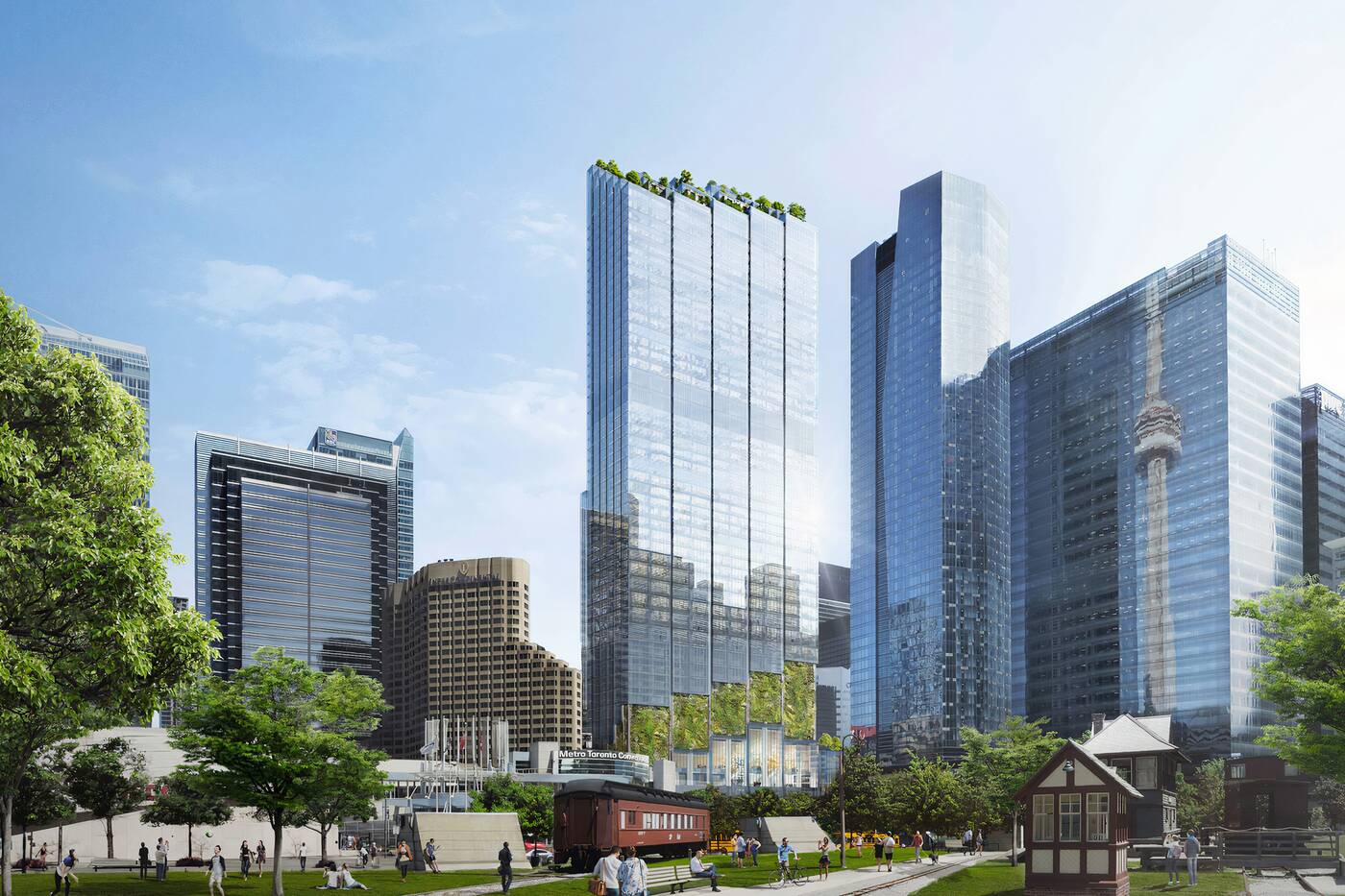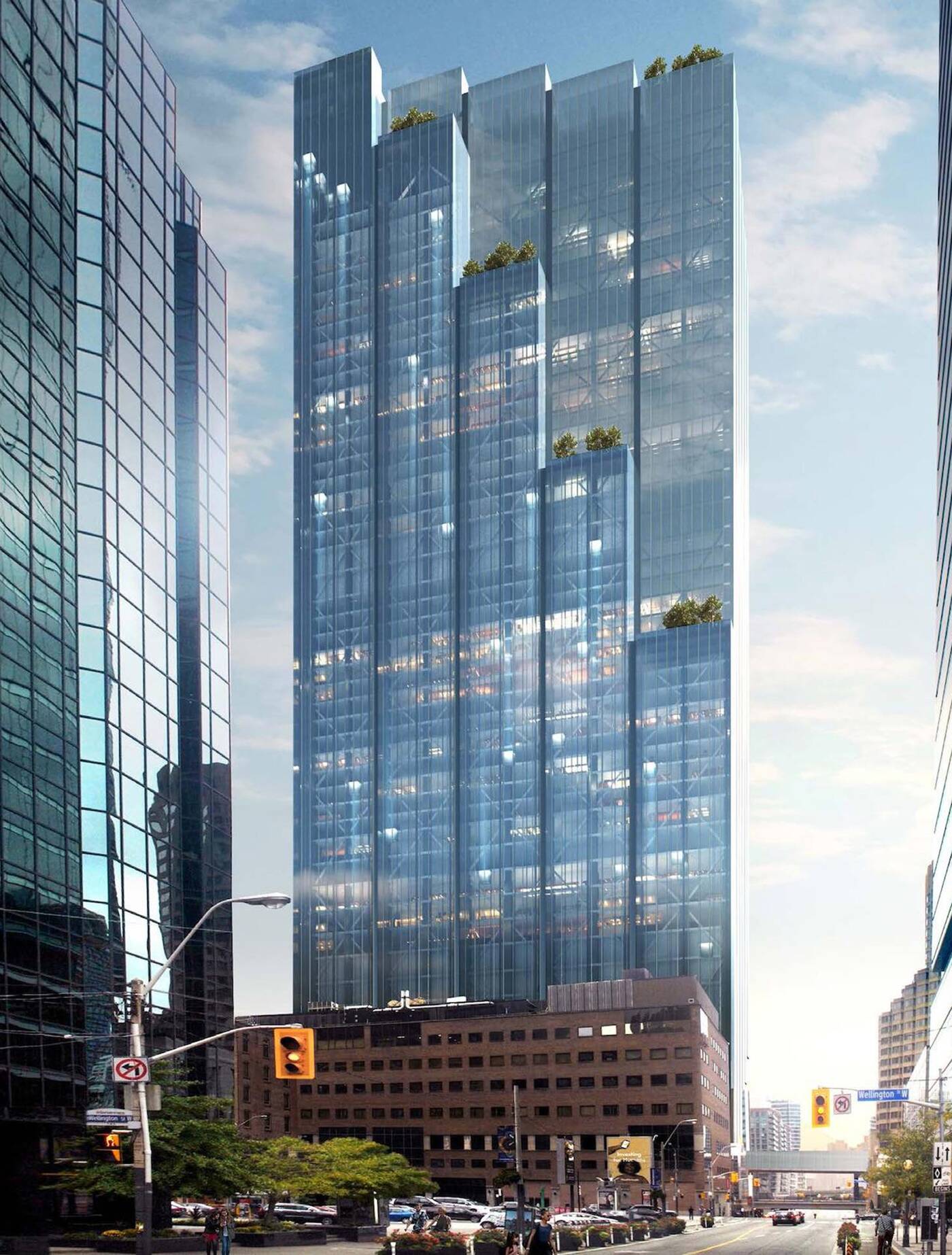
Plans for green skyscraper stalled because of how it will change Toronto's skyline
It was well over a year ago that designs for an innovative and eco-friendly new skyscraper slated for the centre of Toronto's downtown core were finalized, but its approval is still up in the air, apparently due to the fact that urban planners are worried how the structure will affect the city's iconic skyline.
Union Centre is a project undeniably more deserving than the label of "cool," but that's the first thing that comes to mind as a young, environmentally-conscious person writing about it: a humongous complex from major developers that not only takes the planet into account, but makes sustainability its main focus.
But the proposal from Westbank and Allied Properties is, more than five years after the initial plans were announced, still getting pushback from City officials.
 The sprawling 52-storey tower, as plans stand now, would contain a staggering 1.7 million square feet of office space, a large rentable event venue that could fit 2,000 people, and multiple levels of retail shops, all right next to the city's largest transit hub, Union Station.
The sprawling 52-storey tower, as plans stand now, would contain a staggering 1.7 million square feet of office space, a large rentable event venue that could fit 2,000 people, and multiple levels of retail shops, all right next to the city's largest transit hub, Union Station.
It would also be net-zero-carbon emissions, would feature a terraced rooftop forest, green exterior walls, living terrariums perched atop its 30 elevators, connections to public transit and the PATH, and would convert waste energy from its eight floors of data centres to use as heat.
But it's the scale of the project that seems to be the issue — the large footprint in particular, which is an imposing 30,000 square feet and 90 m wide, though certainly not in defiance of any bylaws.
 As one planner told the Globe, these dimensions would make Union Centre wider than any existing building in the area, save for the Manulife Tower, and one of the largest in the city. "A reduction in width … will address many of the issues," they told the news outlet.
As one planner told the Globe, these dimensions would make Union Centre wider than any existing building in the area, save for the Manulife Tower, and one of the largest in the city. "A reduction in width … will address many of the issues," they told the news outlet.
But experts and residents alike are wondering why, if regulations for a building's width do not exist, such a forward-thinking and beneficial project is being stalled, especially when its features as an office space would be highly appealing to large companies that we would want to attract to the city and when it features public amenities.
In a city where often all that is required to be preserved in the redevelopment of a 100-year-old heritage building is one or two exterior facades, why the sudden interest in preserving a certain skyline?
We'll just have to wait and see whether developers end up deciding to drastically amend the building's design, or whether it can eventually make its way through the approvals process as is.
Latest Videos
Latest Videos
Join the conversation Load comments







